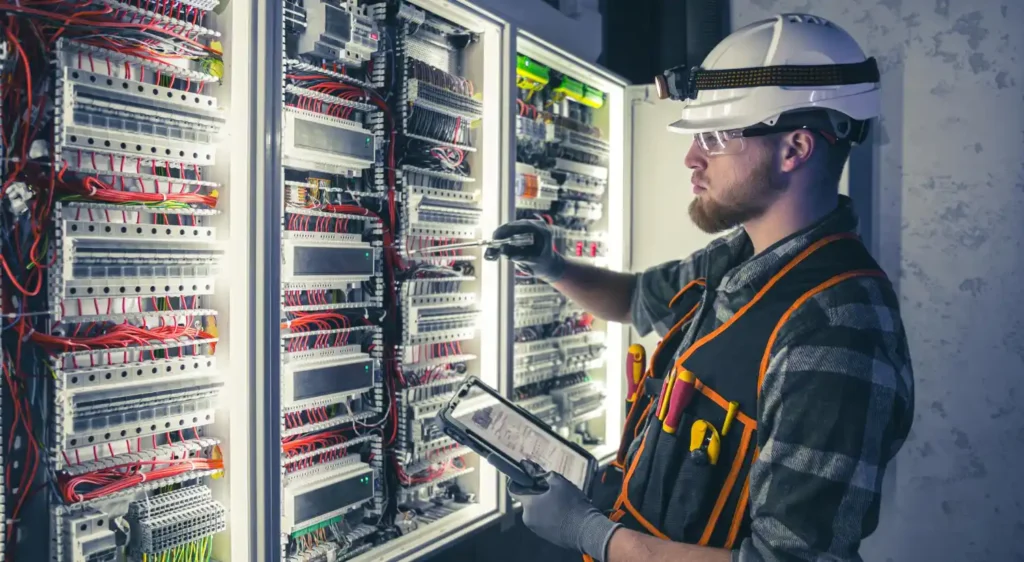Sector-wide initiatives to develop and offer to customers quicker and lower capital DG integration into the distribution network began in the early 2000s. Various ad hoc approaches utilising available protection, control and operational communications technologies had already been implemented in a small number of places at that point. But interest and activity in ANM grew quickly in parallel with both clean energy incentives and network innovation funding. A major breakthrough came in the form of a multiple generating unit, multiple network constraint ANM system in the renewable rich Orkney Islands. Scottish & Southern Energy Networks and Smarter Grid Solutions pioneered a more sophisticated, scalable and acceptable technological approach to flexible DG connections and the ANM system in Orkney has now been in continuous and successful operation for 10 years delivering significant benefits to renewable generator and customers.
A number of flexible DG connection options are on offer from distribution network operators (DNOs) including simpler export limitation and timed export methods. ANM sits at the most sophisticated end of the spectrum of options and now provides a platform for the transition in system operation (more digital/smart and more flexible) and industry arrangements (e.g. DSO business models and functions).
Current uses of ANM platforms by UK DNOs include the widespread (but far from universal) availability of ANM enabled flexible DG connections. Early applications are emerging of DSO network constraint relief flexibility services management and coordination of flexible operations between system operator, transmission operator, DSO and network customers. The addition of these new functions is evident in the growing specification and market demand for distributed energy resources management systems (DERMS) with ANM capabilities being core to most DERMS procurement and deployment in international markets.
The roll-out of ANM systems has stepped up in the UK in the last year with significant DNO license area scaled deployments (or procurements) ongoing. These include the applications of ANM noted above as well as the integration of new DER technologies (e.g. energy storage) and integration to wider network operational systems (e.g. flexibility market platforms, forecast services, system operator platforms). Innovation and trial projects are focusing on applying the same ANM platform and flexibility management principles to smart EV charging, aggregated management of domestic and behind-the-meter energy assets, and network resilience through microgrid management.
There is much to learn from current ANM achievements that should inform further effective and efficient deployment to meet the emerging challenges of the energy transition. These headline issues are significant topics in their own right and require careful attention in the coming months when investment plans are created and implemented:
- DSO functions to be supported by ANM platforms – there is a wide scope of functions envisaged by DSO plans already committed with more to come in RIIO ED2.
- Overall DER and network control objectives, philosophies, algorithms, roles, responsibilities and ultimate authority must fully address the range of functions and new industry structures. The quality of ANM solutions and clarity on these matters affects energy system customers significantly at an individual and collective level.
- Management and exploitation of the rich and granular ANM data available in concert with other new sources and a commitment to make data more accessible in general.
- Leveraging experience and mature ANM capabilities to secure and build on the investments and outcomes of innovation.
- Achieving implementation timescales that match the development of customer demands for new types of services – all industry participants require to move faster by leveraging existing learning and already established capabilities.
- Flexibility, extensibility and adaptability of ANM/DERMS platforms to deliver existing needs securely and at scale while integrating the many new functions envisaged.
- ANM technologists providing energy system transition leadership – there is an important role for the DNOs’ ANM specialists and partners to share openly, contribute, collaborate, lead and problem solve, as required to play a full role in planning and delivering the transition.
- The required investments in systems and platforms for the DSO transition are already part of the industry and regulatory discourse and ANM will continue to be a key part of the thinking.
It is pleasing to see the use of a technology such as ANM already enabling a smarter, more flexible and better energy system. Much has been achieved and learned that can now be built on. The next phase of ANM roll-out with the delivery of several new DSO functions promises to be as exciting and challenging. The final word must be about the energy customer. Ground-breaking new technologies and upgraded industry processes and structures must have crystal clear focus on delivering for customers. But technologies such as ANM can also engage, enable and even excite or inspire customers to play their role in the energy system transition to a cleaner, smarter, more secure, more customer centric and better energy system.
